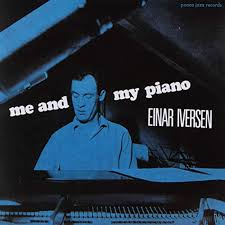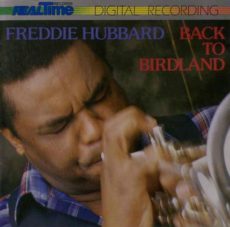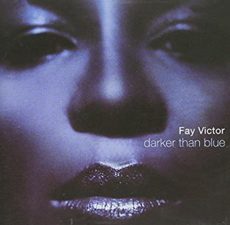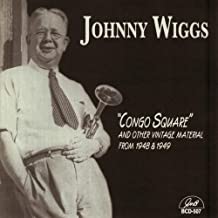
Daily Dose Of Jazz…
Peter Oelrichs Duchin was born in New York City on July 28, 1937, the son of pianist and bandleader Eddy Duchin and Newport, Rhode Island, and New York City socialite Marjorie Oelrichs, who died unexpectedly when he was just five days old. After the death of both of his parents, he was raised by close family friends, statesman W. Averell Harriman and his wife, Marie Norton Harriman.
Educated at Eaglebrook School, he studied piano with Carrie Barbour Swift and The Hotchkiss School prep schools in New England. He spent time in Paris, France, studied at the Sorbonne, then returned home and graduated from Yale University.
Duchin formed his first professional band, played the St. Regis Hotel in New York City in 1962 thanks in part to his family name and the networking it had made possible. His music was heard on the radio in the late 1960s and early ’70s from albums and singles released on the Decca, Bell, and Capitol labels.
From 1985 to 1989, Peter had a professional partnership with Jimmy Maxwell, leader of the traditional society jazz band in New Orleans, Louisiana. By 2009, his band had played at an estimated 6,000 performances. Duchin has served on a variety of arts boards not limited to Carnegie Hall, Spoleto Festival and the National Jazz Service Organization, the World Policy Institute, and The Center for Arts Education.
In 1996 he published his memoir, Ghost of a Chance. Pianist and bandleader Peter Duchin continues to perform and record at 82.
More Posts: bandleader,history,instrumental,jazz,piano

Daily Dose Of Jazz…
Einar Iversen was born on July 27, 1930 in Mandal Municipality, Norway and was raised in Oslo, Norway where he studied classical piano under Inge Rolf Ringnes, Artur Schnabel, and Finn Mortensen. He quickly established himself on the Oslo jazz scene in 1949 and released his first album with Rowland Greenberg’s orchestra in 1953.
In the 1950s he played with Dizzy Gillespie, Anthony Ortega, and the Modern_Jazz_Quartet”>Modern Jazz Quartet. He was a regular pianist at Metropol Jazz Club in the Sixties, where he played with Dexter Gordon, Coleman Hawkins, Johnny Griffin, Svend Asmussen, and Stuff Smith in Sweden. As a leader, Einar recorded an album in 1967 leading his own E. I. Trio, Me and My Piano, plus five more. His sideman duties had him performing with Swedish Putte Wickman, Monica Zetterlund, and Povel Ramel on tour in 1978. In Norway, he participated in a number of releases with Bjarne Nerem, Egil Johansen, Totti Bergh, Nora Brockstedt, and Ditlef Eckhoff.
Pianist and composer Einar Iverson, who became one of the most respected Norwegian jazz musicians, awarded Buddyprisen and the Knight of First Class of the Order of the St. Olavs, passed away on April 3, 2019 in Oslo, Norway at the age of 88.
More Posts: bandleader,composer,history,instrumental,jazz,music,piano

Requisites
Trumpet and flugelhorn jazzman Freddie Hubbard steps into the spotlight with his first Hard-Bop album since his 1970 CTI Records debut, Red Clay. Back To Birdland (M & K Realtime Records RT-305) has Hubbard leading a sextet featuring Ashley Alexander (tracks: A1, A2, B1 to B3) on double trombone; Richie Cole (tracks: A1 to A3, B1), Med Flory (track: B3) on alto sax; George Cables on piano; Andy Simpkins on bass and John Dentz on drums. Before this release, Freddie recorded a series of LP’s for CTI and Columbia exploring the styles of Jazz-Funk, Jazz Fusion, Smooth Jazz, and Soul-Jazz.
My copy used in this report is the original 1981 US Digital Stereo Audiophile release. Shaw ‘Nuff by Dizzy Gillespie and Charlie Parker begins the album with the front-line blowing fire on the melody. Freddie starts wailing on a hard-driving, opening chorus, then Richie energizes the second solo with the high-voltage current. Ashley brings a swift, brassy attitude to the next reading, then George’s fingers fly with quicksilver speed and John fills the closer with radiant intensity.
Star Eyes by Gene de Paul and Don Raye debuted in the 1943 musical-comedy, I Dood It! The song became a jazz standard after Charlie Parker recorded it for Mercury Records in 1951. The ensemble states the first chorus, then Hubbard takes over on flugelhorn for the next verse. He begins the first solo, conveying a light mood that’s joyously happy and relaxed. Cole takes over in low gear, then builds steadily into a very satisfying groove. Cables puts a vibrant personality into the third statement and Vinnegar wraps up things with a succinct solo. Lover Man is a revered standard from 1941 by Jimmy Davis, Roger Ramirez, and Jimmy Sherman that was written for Billie Holiday. Richie Cole gets the spotlight here and crafts an indelible portrait on the melody and opening statement capturing the beauty of the lyrics perfectly. Freddie has a stylish flugelhorn performance that’s nicely detailed and beautifully paced; he’s also featured on the main theme and ending.
For B.P., a Hubbard creation is one of the most interesting tunes on the album featuring interchanges of cross-rhythms within different time signatures. This song is a tribute to Bebop pianist, Bud Powell and was introduced on the 1968 LP, High Blues Pressure. The leader takes charge of the introduction and vigorous theme, then Cables initiates the first of two thrilling solos. Hubbard follows with a sizzling performance that makes stunning use of the rhythm section’s sterling support. Cables then prepares a tasty musical brew with a spicy flavor on the finale ahead of a mesmerizing climax.
Stella By Starlight by Victor Young and Ned Washington offers Ashley Alexander the spotlight in a quartet setting. This romantic ballad was the main title song during the opening credits and throughout the 1944 film, The Uninvited. Ashley introduces the song slowly but picks up the pace to a sprightly tempo for the melody and first reading. George gives a zesty performance next, then Leroy closes with a velvety smooth finale.
Hubbard’s uptempo Byrdlike was originally recorded on the 1962 release, Ready For Freddie. Everyone gets solo space except Vinnegar and Med Flory takes over on alto, soloing twice. This speedster gets underway with a collective melody by the ensemble. Cables takes the reins first, delivering an adrenaline rush of great speed. Hubbard raises the temperature on the second solo to a ferocious velocity. Flory fuels the first of two readings with exhilarating vitality, then Alexander tells his story with swift acceleration. The altoist returns on the second reading blazing and Dentz makes a clever comment on the closing solo with an entertaining kick at the end.
Back To Birdland is a sonic tour de force with a superb soundstage. Scott Simon and Ken Kreisel are the men behind the dials; the label took the utmost care in preparing their records for the jazz lover, utilizing the very purest vinyl available and imported pressings made in West Germany. If you’re a Freddie Hubbard fan and are seeking an album recalling the Hard-Bop spirit of Goin’ Up, Open Sesame, and Ready For Freddie from his Blue Note years, I highly recommend Back To Birdland! It’s an excellent album from a first-rate sextet that would make a great addition to any jazz library!
~ Goin’ Up (Blue Note BLP 4056/BST 84056); High Blues Pressure (Atlantic SC 1501); Open Sesame (Blue Note BLP 4040/BST 84040); Ready For Freddie (Blue Note BLP 4045/BST 84045); Red Clay (CTI Records CTI 6001); Star Eyes (Mercury Records 11087) ~ Source: Discogs.com ~ Shaw ‘Nuff, Stella By Starlight – Source: JazzStandards.com ~ Star Eyes – Source: Wikipedia.org ~ For B.P. – Source: Album Liner Notes by Dr. Herb Wong © 2020 by Edward Thomas Carter
More Posts: choice,classic,collectible,collector,history,instrumental,jazz,music,trumpet

Daily Dose Of Jazz…
Fay Victor was born on July 26, 1965 in Brooklyn, New York City. After spending her early childhood years in New York, Zambia, and Trinidad & Tobago, her mother settled in Long Island, New York where she spent her teenage years. After her mother’s sudden death, she re-discovered music and singing, and after a three-month stint at a club in Fukui City, Japan with pianist Bertha Hope, she decided to start a career as a jazz singer.
In 1996, Fay settled in Amsterdam, The Netherlands and performed and toured through the country, as well as Spain, Germany, the UK, Sweden, Russia, and India. While living in the Netherlands, Victor branched out into blues, songwriting, and forms of improvising outside the standard jazz canon.
Returning to the States in 2003, Victor has made her home in New York City. She has worked with the likes of Randy Weston, Roswell Rudd, Anthony Braxton, Misha Mengelberg, Vijay Iyer, Tyshawn Sorey, Wadada Leo Smith, Nicole Mitchell, Marc Ribot, Martine Syms, Daniel Carter, William Parker, Darius Jones, Wolter Wierbos, Ab Baars, Joe Morris, Sam Newsome, and Reggie Nicholson.
Victor has coined the term “freesong” to describe her vocal approach. In her jazz repertoire, he has specialized in the work of Thelonious Monk, Ornette Coleman, and Herbie Nichols.
Vocalist, composer, lyricist, and educator Fay Victor, who originally sang in the traditional jazz field, has expanded her repertoire to include blues, opera, free improvising, avant-garde, modern classical music, and occasional acting, continues to perform and record.
More Posts: bandleader,composer,educator,history,instrumental,jazz,lyricist,vocal

Daily Dose Of Jazz…
Johnny Wiggs, was born John Wigginton Hyman on July 25, 1899 in New Orleans, Louisiana. He started his music career on the violin but soon adopted the cornet. His main stylistic influences were Bix Beiderbecke and King Oliver, who Wiggs insisted did his best work in New Orleans in the years before he moved up North to New York City and was recorded.
Returning to New Orleans in the late 1920s, he took a job as a teacher in Louisiana and at night played in New Orleans jazz clubs. During this period in his life, he made his first recordings as John Hyman’s Bayou Stompers.
In the 1940s he returned to being a full-time musician, leading several bands and recording many songs. He used the pseudonym Johnny Wiggs, as jazz was still looked down on in some circles. He went on to be an important figure in the local traditional jazz revival.
The 1960s saw Wiggs performing part-time, remaining active until the Seventies. He mentored George Finola and Pete Fountain was one of his more famous pupils. He helped found the New Orleans Jazz Club and was a force behind the jazz revival in the 1940s.
Cornetist and bandleader Johnny Wiggs passed away on October 10, 1977 in his hometown of New Orleans.
More Posts: bandleader,cornet,history,instrumental,jazz,music



